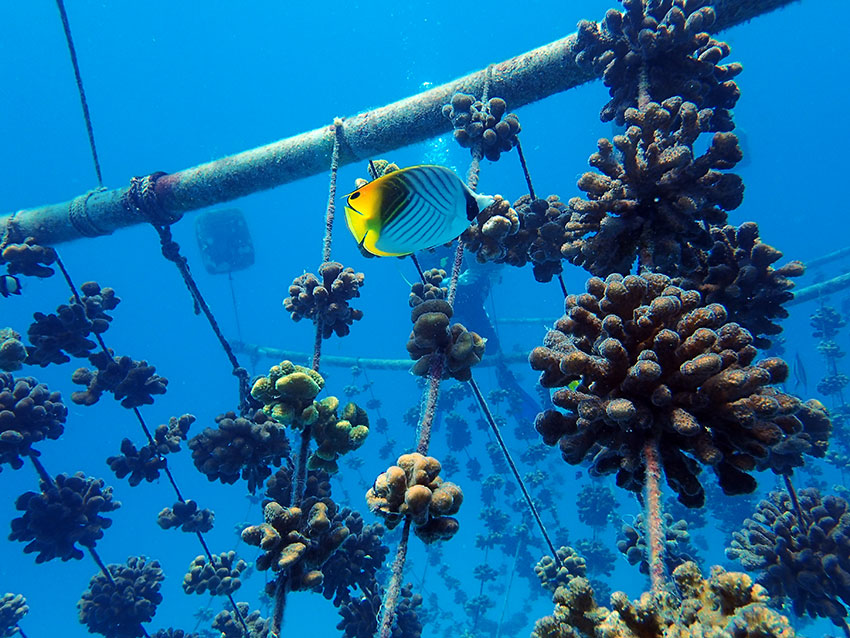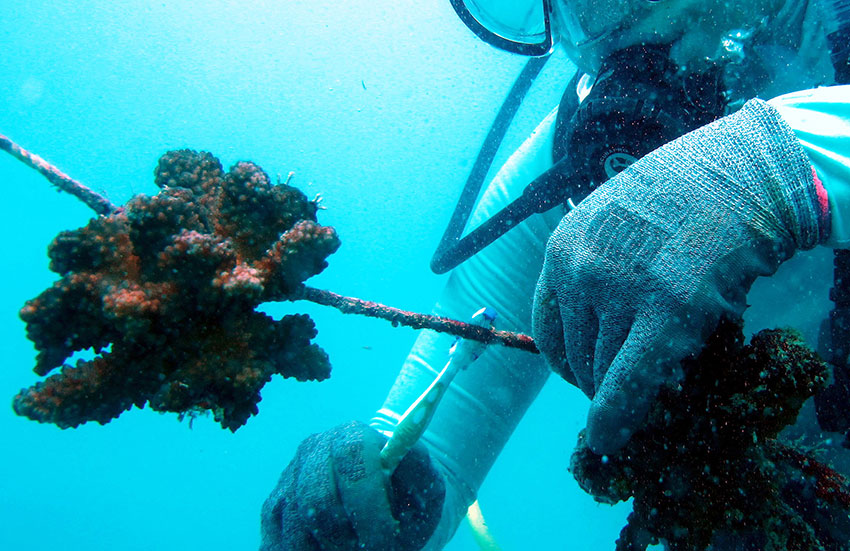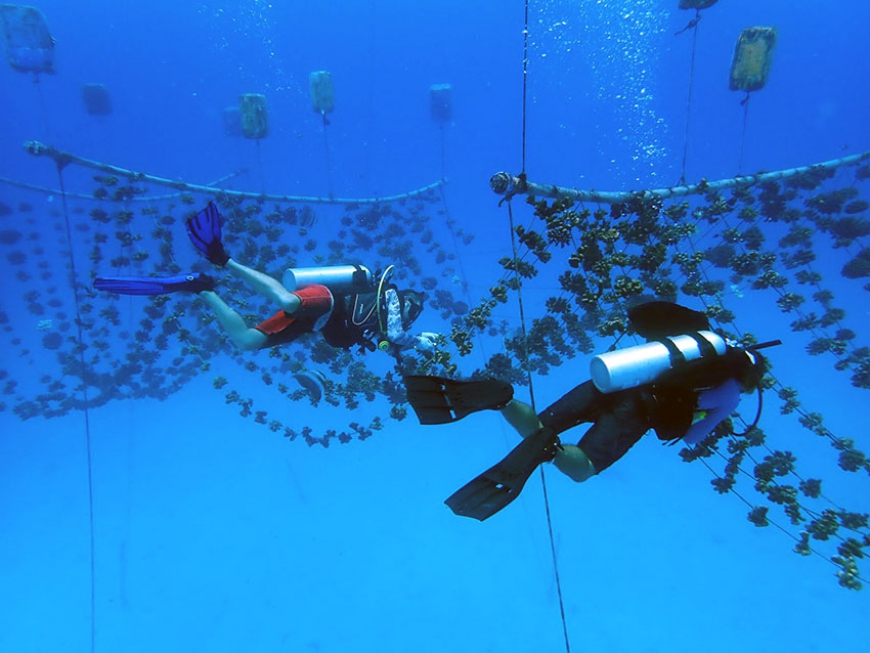The nursery holds the team's stock of precious coral fragments in mid-water on ropes, in perfect conditions for growth, until they are ready for transplantation to the reef.
It can take up to 12 months for corals to reach a suitable size for transplantation and so coral nursing is a continuous task. Just like human babies, the corals cannot be left unattended for long.

"The core task is cleaning," says Chloe Shute, a Reef Restoration Specialist with the NGO. "Algae and other biofouling organisms can quickly colonise the ropes that hold the corals, acting as direct competition."
"If not removed these organisms can encroach on the coral itself potentially causing extensive tissue loss and even death."
But cleaning is no easy feat with up to 20 ropes each holding around 100 corals.
"Each of our nursery dives is carefully planned. A visit to the nursery starts with equipment preparation. Toothbrushes, table knives and scrubbing brushes are essential tools for cleaning along with our SCUBA gear and safety equipment."
Weather conditions are checked in the morning. Strong current, swell and high winds can cause a problem when making the 3 km journey to the nursery in the boat and when carrying out the work underwater.
"Jacques, our experienced skipper, arrives around 8 am, then we load our boat at the beach and head off to the nursery. Upon arrival at the site within the Cousin Island marine protected area, we locate the permanent mooring by its dashing yellow buoy - often occupied by a resident Bridled Tern, moor the boat, and gear up."
"If there is a strong surface current, we may ask Jacques to drop us up-current so that we can drift onto the nursery. On calm days we can roll off the boat and head straight to the nursery with ease. On some occasions we cancel the dive if the conditions are particularly challenging."

Descending as a buddy pair the team gets to work. Using the back of a table knife for scraping they remove algae on the ropes. They also carefully clean the rope next to the coral using a toothbrush so not to cause any damage to coral tissue that has attached itself to the rope. Typically, one diver can clean three ropes in one dive. Cleaning each 24m rope thoroughly can take up to 2 weeks of diving.
"We visit the nursery as much as we can in eager (and sometimes nervous) anticipation. Are the corals all healthy? Are they growing at a suitable rate? Are the ropes free of algae? Is the nursery structure intact?"
Once a month the team cleans the nursery structure. This consists of scrubbing algae and sponge off of the pipes, the jerry cans used for buoyancy, and the ropes. They must also check the condition of the nursery structure as well as its buoyancy. Jerry cans, filled with air, keep the nursery at a depth of 8 – 9 m but sometimes they lose air which causes the nursery to drop. Thus, they regularly check that the jerry cans are full of air.
Article first appeared in the Seychelles Nation, Monday 27th August 2018

